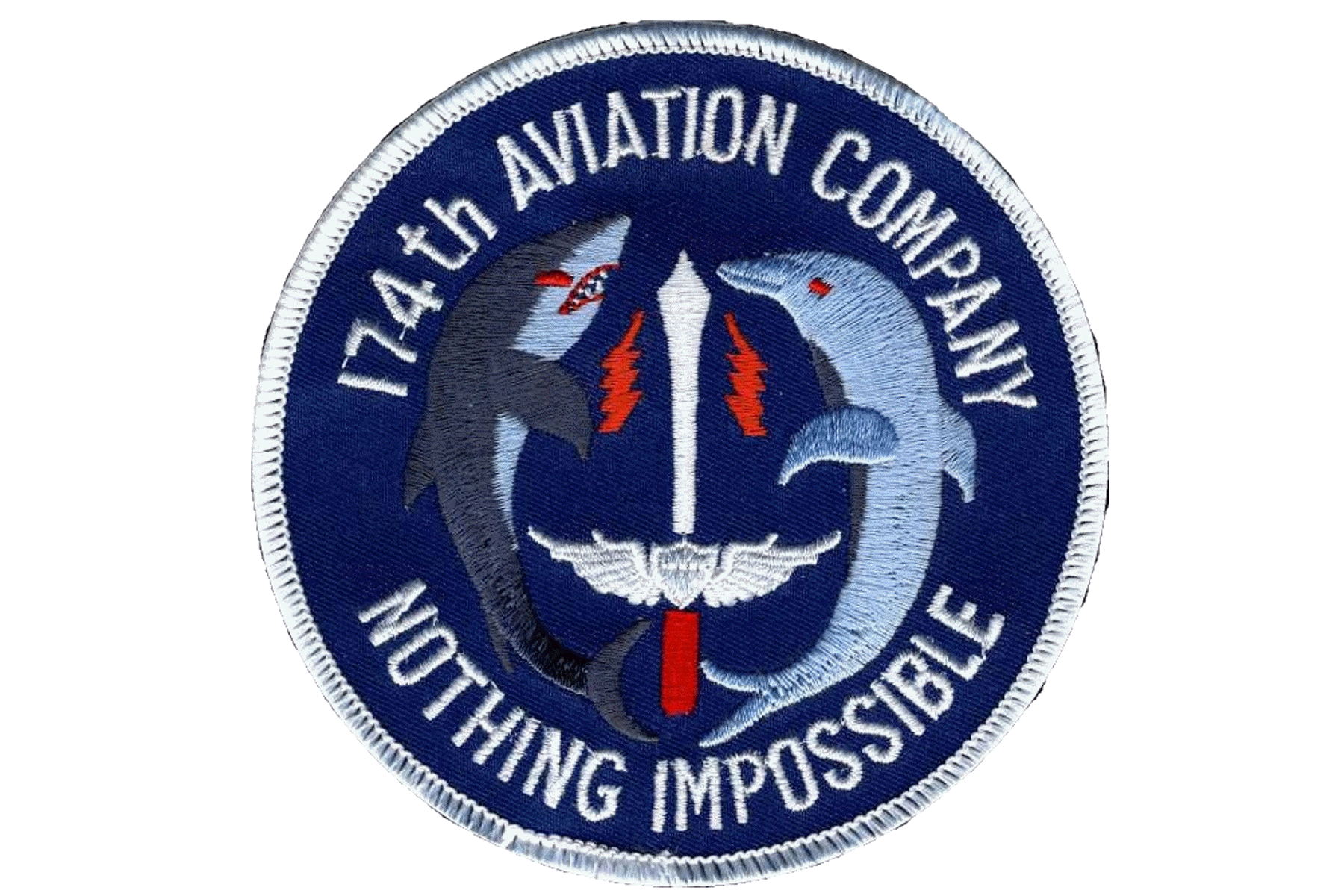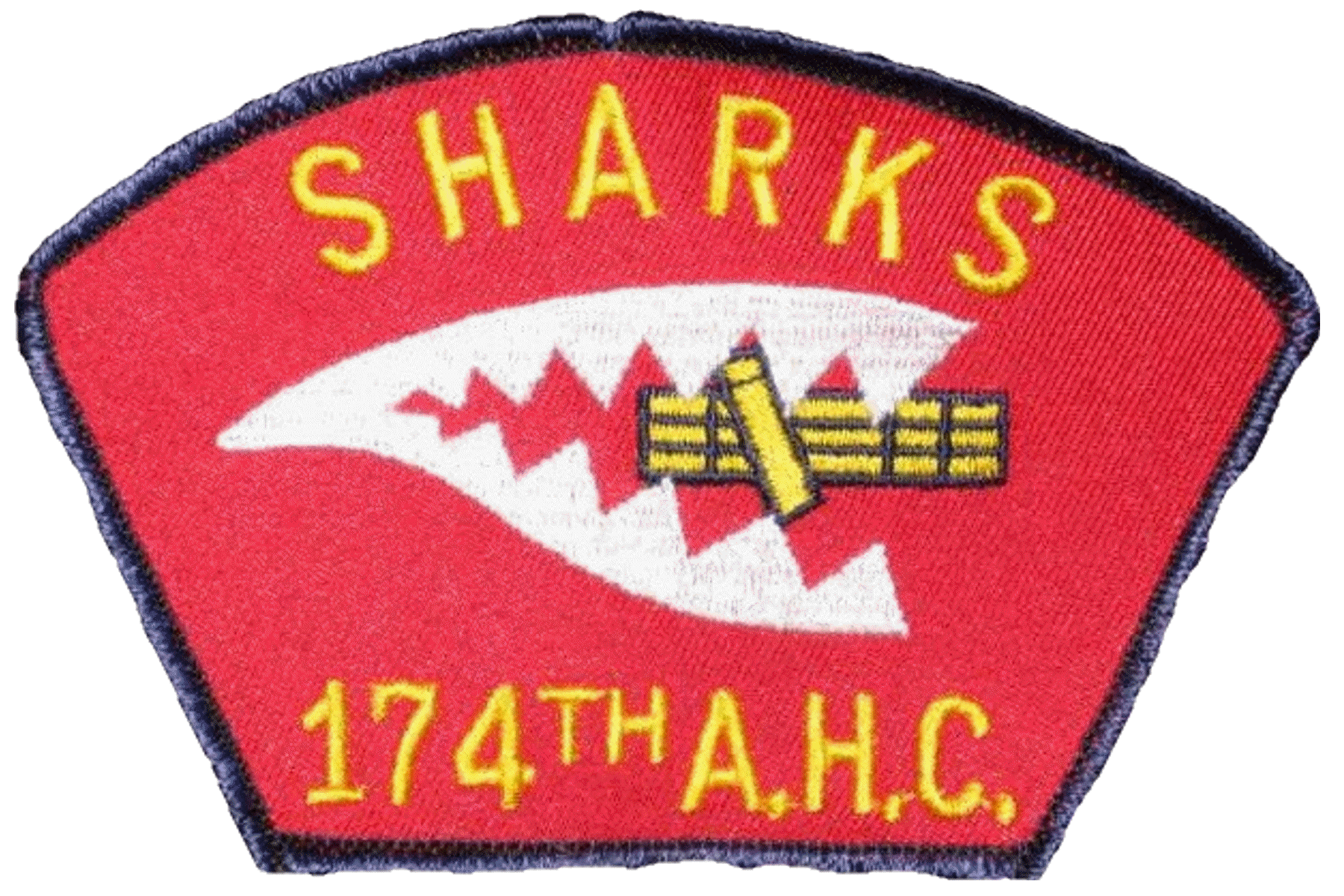This article was written by the 1st Aviation Brigade
Information Office (IO) and published in the Stars and Stripes
1600 Soldiers Air Assaulted In Operation
14 August 1967
CHU LAI, (1st AVN-IO) - Operation Benton, a multi-battalion combat assault force from the Americal Division, placed nearly 1600 fighting men into fierce ground action on the first day of the operation.
Massive airmobile assaults planned and staged by the 14th Combat Aviation Battalion's five assault helicopter companies contributed over 60 aircraft during the first day of Benton. (Webmaster's note: The units of the 14th CAB at this time consisted of four assault helicopter companies--71st AHC, 161st AHC, 174th AHC, and 176th AHC--and one assault support helicopter company (Chinooks)--178th ASHC.) That day 637 hours were flown, lifting the combat troops and 259 tons of cargo.
Assistant S-3 officer of the 1st Aviation Brigade unit, Maj. Derald Smith, called it "by far the most complicated assault operation we've run."
Final figures showed the 14th had lifted 12,256 men and 2046 cargo, flown 2804 hours, and evacuated 48 casualties.
In addition, the battalion's gunships had been credited with 49 Viet Cong killed and 125 enemy structures destroyed.
The initial fleet of heliborne troops touched down in the lading zones (LZs) at 7:30 a.m. Intelligence sources reported the area was "heavily saturated with anti-aircraft positions and .50 cal. automatic weapons."
Another factor which concerned the flight leaders was the extreme care taken to prevent aerial reconnaissance of the LZs by aviation commanders. Only spotter-type airplanes had flown the operational area the day before so as not to arouse enemy suspicion of the assault.
All LZs were picked by map reconnaissance and verified by infantry battalion commanders and mission aviation leaders riding in the same chopper on the day of the assault.
Once on approach to the secreted LZs, conditions proved less than desirable. While a command and control helicopter was marking all LZs for landing, fierce sniper and automatic weapons fire opened up from wood lines.
Later, the LZs were found to be mined - one even had anti-helicopter devices. Another was filled with punji stakes and hostile fire was reported from most of the villages in the well-populated area.
However, ground commanders later said the gunships had drastically cut friendly casualties. Gunships from the 71st, 161st, 174th, and 176th Assault Helicopter Companies made repeated runs in support of the operation.
Note: This related information was found in the Aviation ORLL report for the 14th Aviation Battalion referring to moving the 101st Airborne Division troops in Operation Benton:
...
(6) On 13 August 1967, the Battalion committed 52 UH-1D's, 13 UH-1C (gunships), and 10 CH-47's to start operation Benton. This massive operation involved moving two infantry battalions, two artillery batteries and support elements for a total of more than 1,500 combat troops. The combat assault was conducted in a morning and afternoon phase; however, there was no break in pace as indicated by a new Battalion high of 637 hours flown in one day. Nine aircraft of the Battalion were hit by enemy ground fire, however there were no crewmember casualties.
-------------------
Webmaster's note: I do NOT consider this ORLL report correct, as I was flying one of those 52 UH-1D's this day. It was my FIRST flight as a Dolphin aircraft commander (AC), and my co-pilot was WO-1 Richard Machina, a flight school class-mate of mine. It was scheduled to be his LAST flight as a "peter-pilot" (co-pilot). We'd both passed our AC checkrides the day before, but it was the company policy to try to match up brand new AC's with experienced peter-pilots. I was (perhaps arbitrarily) assigned to be the AC for this flight. It could just as well have been Richard. In any event, as AC I chose to fly left seat due to increased visibility on the left side (because of less instrumentation on the instrument panel on the left side--the left seat is actually the co-pilot's station on a helicopter). Seat choice is the perogative of the AC. During the initial combat assault that day we were shot up badly by Viet Cong automatic weapons, with at least seven rounds coming through the fuel cells and cabin area in the back, and Richard receiving a severe leg wound as several rounds came through the pilot's side of the cockpit area. While on short final approach to the LZ, the VC fired almost directly up into the aircraft from about 50-feet altitude. Hard to miss!. Both halves of an armor-piercing round that broke in two as it came through the right side of the cockpit area entered Richard's left leg and traveled up his leg toward his knee. A 101st Airborne Division soldier in the back was also wounded. We wallowed back into the air and limped back toward the pickup zone streaming fuel. Richard was medevaced back to the States. I consider that a crewmember casualty. I suspect Richard would too. --Jim McDaniel, Shark4.
|
![]() Return to top of: 1967 History Page.
Return to top of: 1967 History Page.![]() Return to top of: Home Page.
Return to top of: Home Page.
